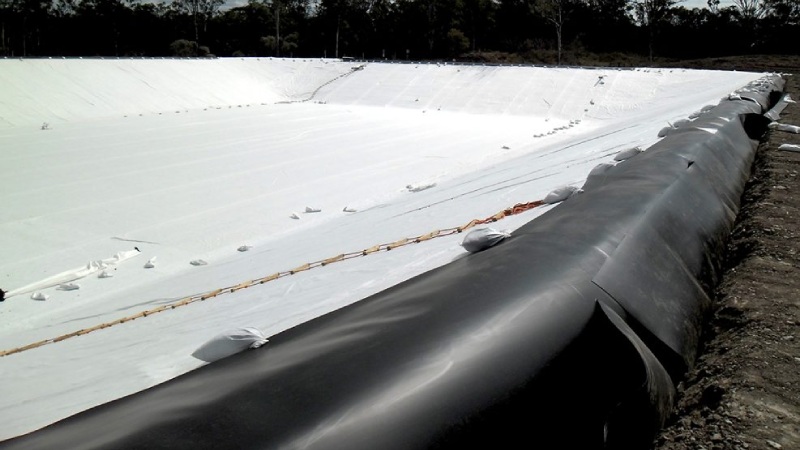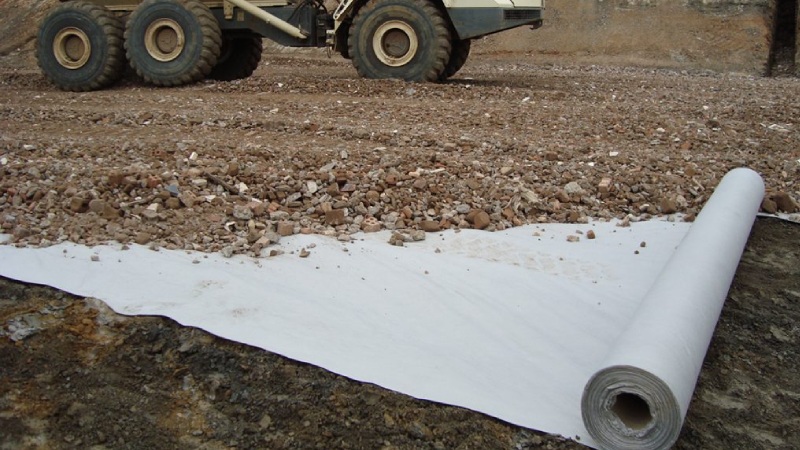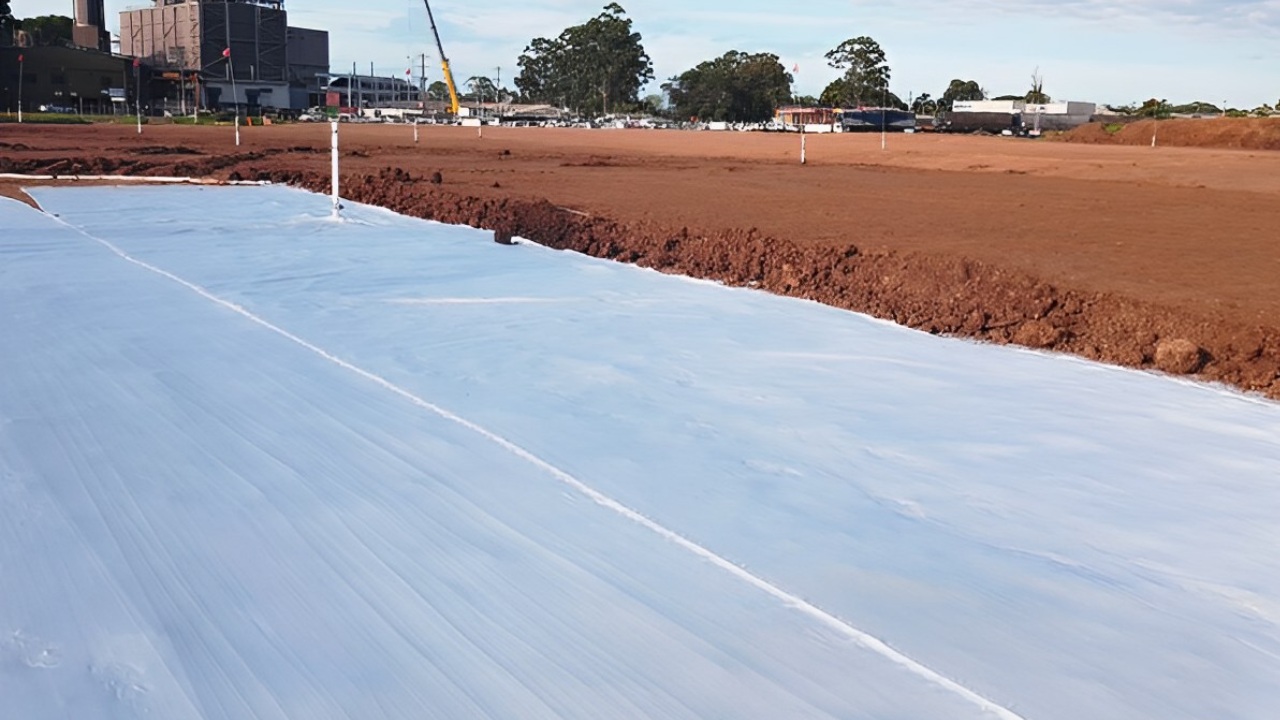What are the main types of geotextiles and how do I choose the right geo fabric for the job?
What is the purpose of geotextile?
Geotextiles are synthetic fabrics designed to reinforce soil and improve poor soil conditions. Used for a wide range of construction, drainage and landscaping applications.
As a separation layer, geotextile fabric eliminates the migration of fine particles. Designed for challenging soil types considered unsuitable for roads or pavements.
Geotextile fabrics can also add strength and stability to the subsoil layers. This minimises earth movement, cracking and sinking by creating a stable foundation.
Where would are Geotextiles used?
Used for infrastructure works such as roads, landfills, drainage and civil engineering projects.
What are the types of Geo Fabric?
Designed in a wide variety of styles, yet, the most common are high strength woven and needle punched non-woven fabrics.
Woven and non-woven geotextiles are both permeable, however non-woven geotextiles have a smaller EOS (opening for fines to pass) and a higher flow rate meaning they are preferred for drainage and filtration applications.
What is the difference between Woven and Non-woven?
Tensile strength is the biggest difference between the two. Woven geotextiles have a high strength at low elongation which allows them to be used as a tension membrane for ground reinforcement. Non-woven geotextiles have a higher elongation, but can be more robust allowing them to act as a separation layer under heavy rock fill.
Permeability rate is also a factor that will influence what fabrics are used. Non-wovens have a high flow rate which is preferable for granular or free draining soils.
Both types are manufactured from polyester or polypropylene synthetic fabrics. Polyester has a higher strength at low strain, however polypropylene is a more stable product in higher pH soils. Polypropylene is also naturally more resistant to UV degradation.
What is woven geotextile used for?
The tensile strength of woven geotextile is ideal for stabilising base course underneath roads and pavements, and for reinforcing difficult soil types.
Another benefit of woven is excellent creep resistance. Resulting in higher long term design strengths. Woven geo provides exceptional soil confinement resulting in superior load distribution.
A cost-effective solution for reinforced soil on:
• Embankments and slopes
• Stabilisation projects
• Reinforcing pavements and roads
What is non-woven geotextile used for?
Applications include road and rail work, separation, drainage, protection and filtration works. Often used in parks, landfills, on batters and slopes, behind retaining walls and more.
Designed for applications needing excellent drainage, like sports fields and in landscaping situations. The higher permeability allows moisture to drain at a faster rate compared to woven fabrics.
Most non-woven geotextiles are made from polyester. Resistant to alkalis and acids, they are long-lasting when installed under the soil.
Non-woven geotextiles use include:
• Pavement stabilisation
• Subgrade or subsoil separation
• Slope stabilisation
• Liner protection
5 common uses for geotextile fabrics
- Separating different materials: Geotextiles create a separation barrier between materials such as soil and rock fill. Establishing a protective long-term layer.
- Stabilisation: Woven geotextiles act as a tension membrane under the road base or sub-base, minimising rutting and excess movement Through the separation function, Non-woven geotextiles improve stability of damp and soft soils when laid out under rock as they ensure the fine particles do not reduce the friction within the rock pavement area. Adding a layer of non-woven geo fabric means water can seep from the soft soil to the draining material. As a result, it consolidates the base layer, strengthening it and making it more reliable.
- Reinforcement: Geotextile adds strength to steep slopes, retaining walls and embankments. Forces are transferred to the geotextile layer rather than into the ground. This prevents sloped sites from slipping, crumbling or eroding over time.
- Filtration: As a filtration layer, they allow moisture to seep through at a controlled rate. slowing the flow of water whilst preventing soil and fine particles from passing
- Drainage: Geotextile fabrics help merge water and transport it along a designated path. Utilising the plane of the geo fabric to create a wicking effect.
Choosing a Geotextile for road applications
Australian road authorities have strict criteria’s that must be met.
Compliance with manufacturing and testing requirements. As well as strength and filtration limits for different applications.
For road application, the soil type, rock fill and geotextile itself will interact to produce different results. Getting the balance of these three things right is critical.
It is important to note that different site conditions need different solutions. A steep embankment would have different geotextile needs to level road base. Understanding the application and the geotechnical forces at play is key to a successful installation.
Strength ratings
Divided into classes based on their strength. Ranging from class A at the low end through to hardwearing class E geotextiles. Usually, the class would be specified for a project, and this is determined by the size and amount of rock fill to be used.
Soil type
The soil type also has a bearing on which class of geotextile is appropriate, however, soils can generally be classified as either soft or firm. When working with soft soils, typically you need a stronger, thicker geotextile to ensure the fill being placed on top doesn’t puncture through. For separation on firmer soils, a thinner geotextile is typically fine as it will not be stretching and moving with loads placed on top.
Fill size
Once you have worked out what size rock fill will be available for your project, you can then select the required geotextile class. The larger and heavier your rock is, the thicker the geotextile will need to be to ensure it doesn’t puncture. For pavement stabilisation, rock fill sizes generally fall between 20mm and 150mm, however can be up to 400mm in diameter.
The below chart offers a simple look at the type of geotextile required for different projects. An accurate selection should always be made by an engineer. It should reference the requirements of the local road authority. This is a simplified table from NSW RMS R63, and QLD TMR MRTS27.
Geotextile Selection Chart
Photo Gallery



